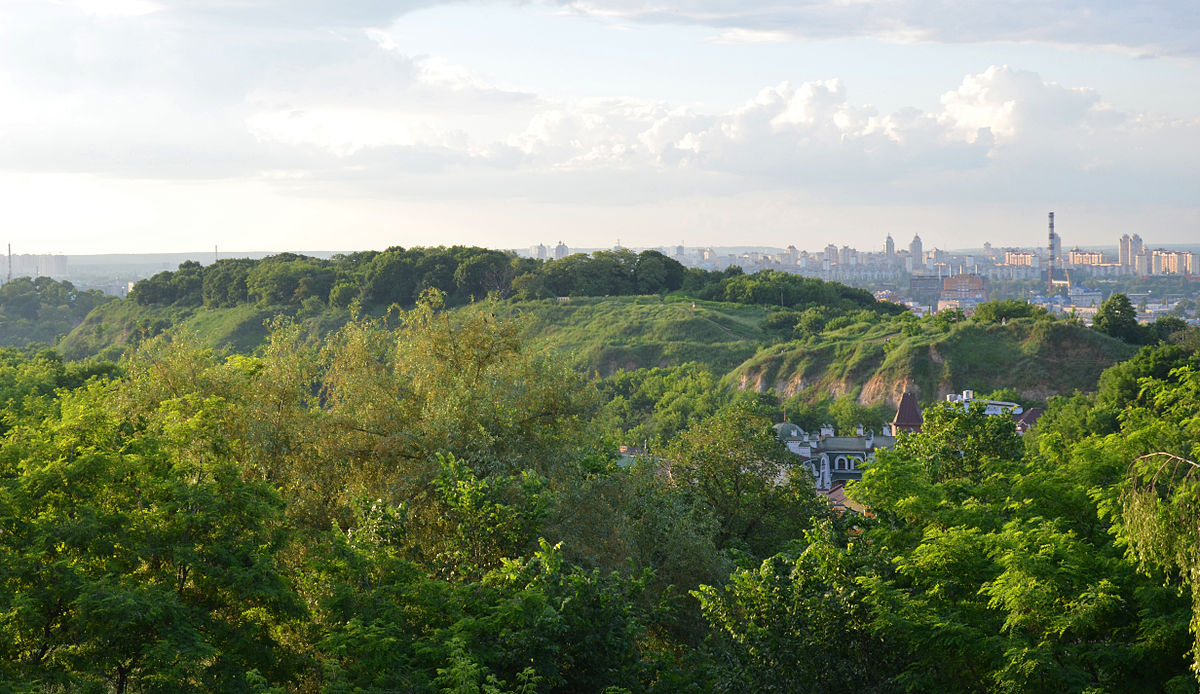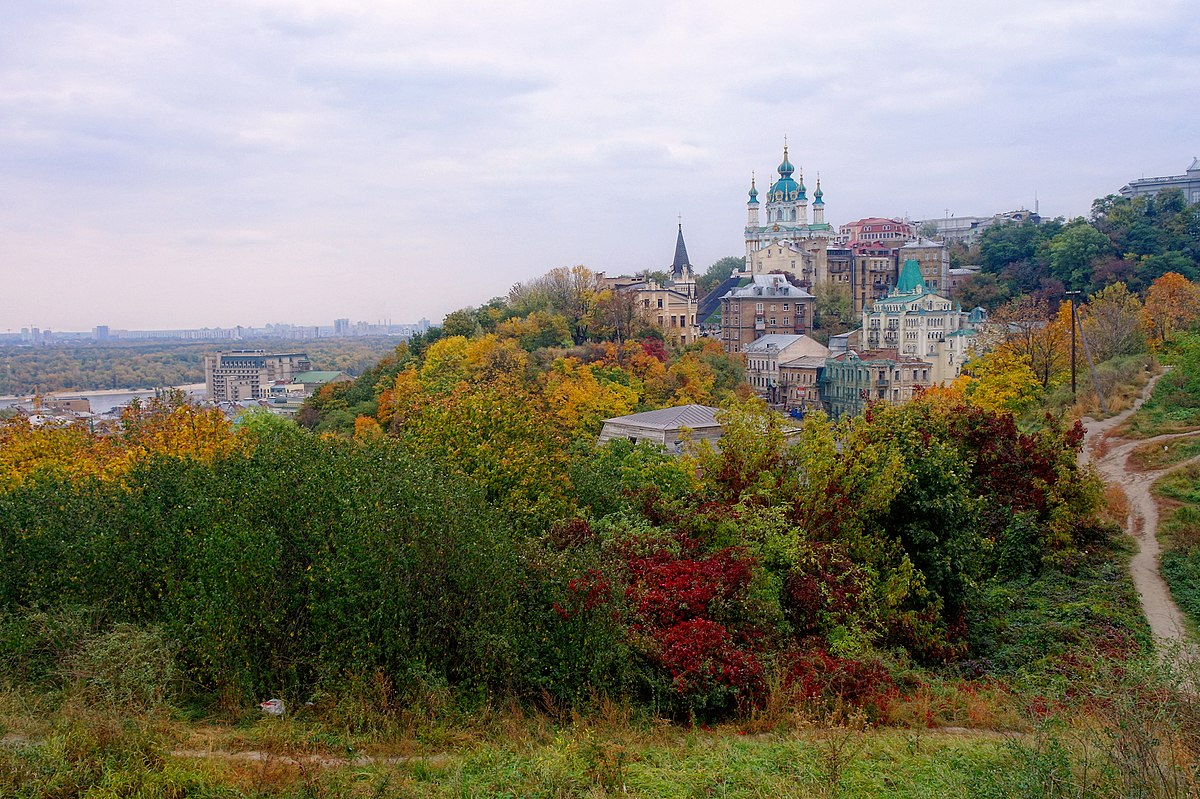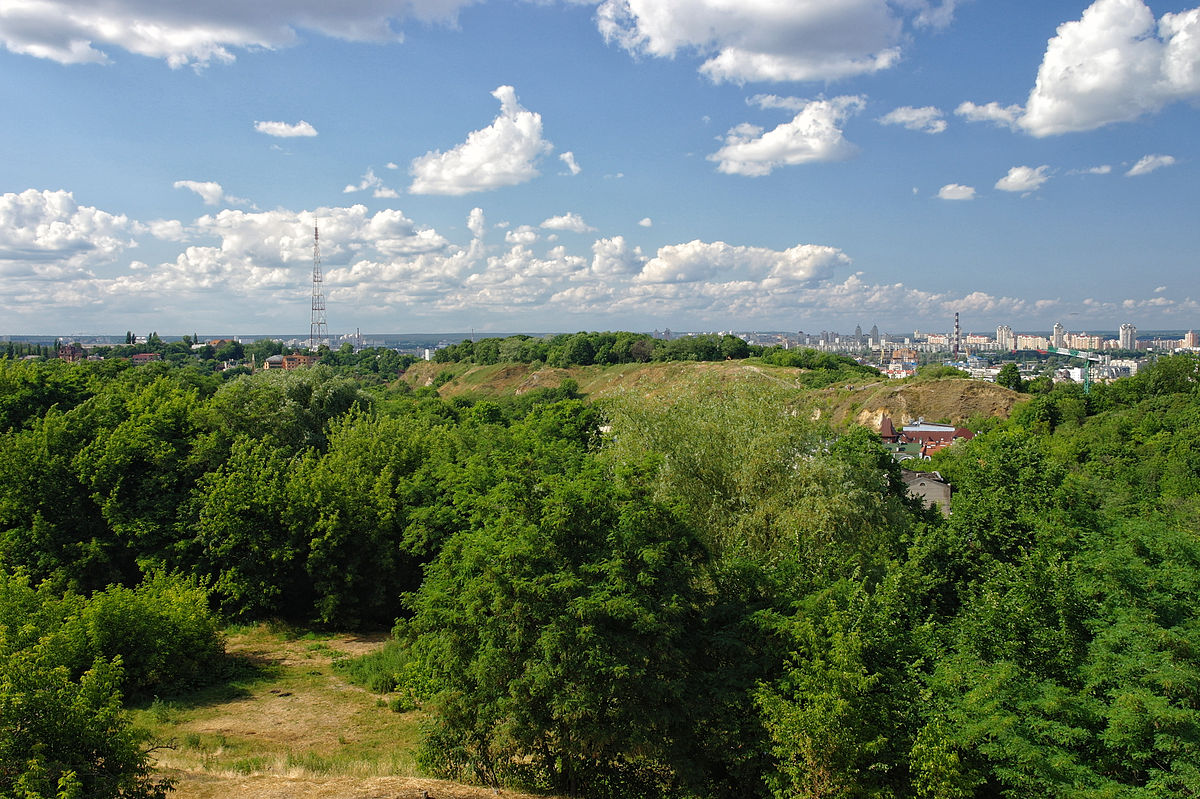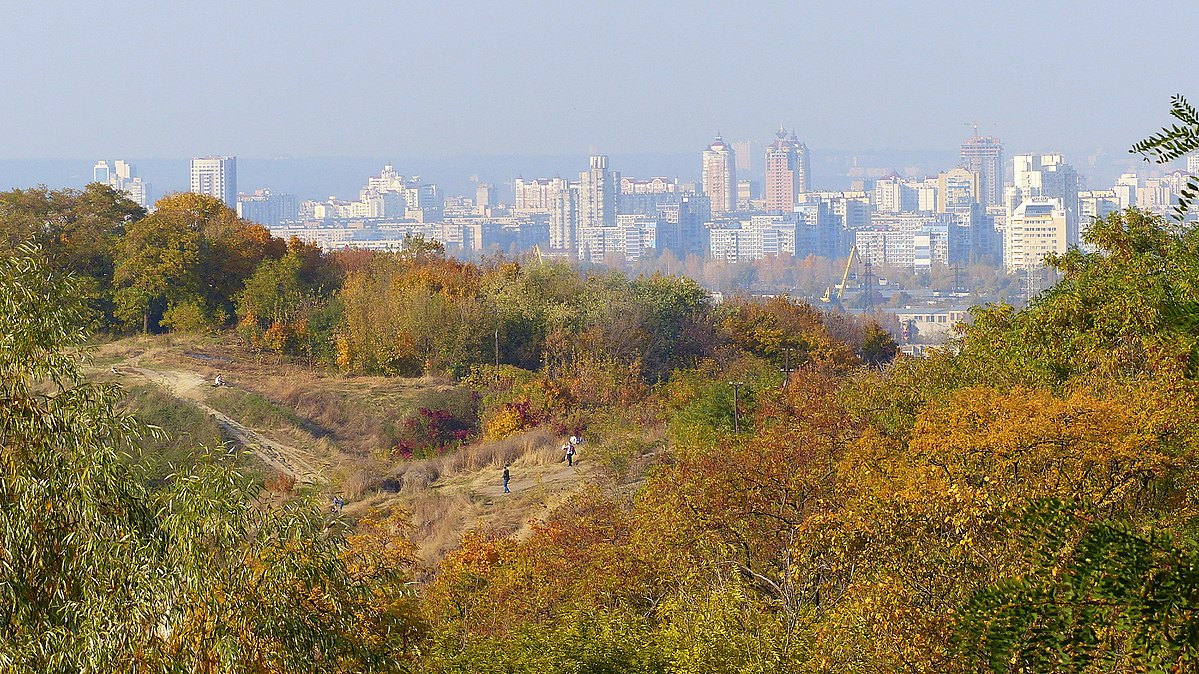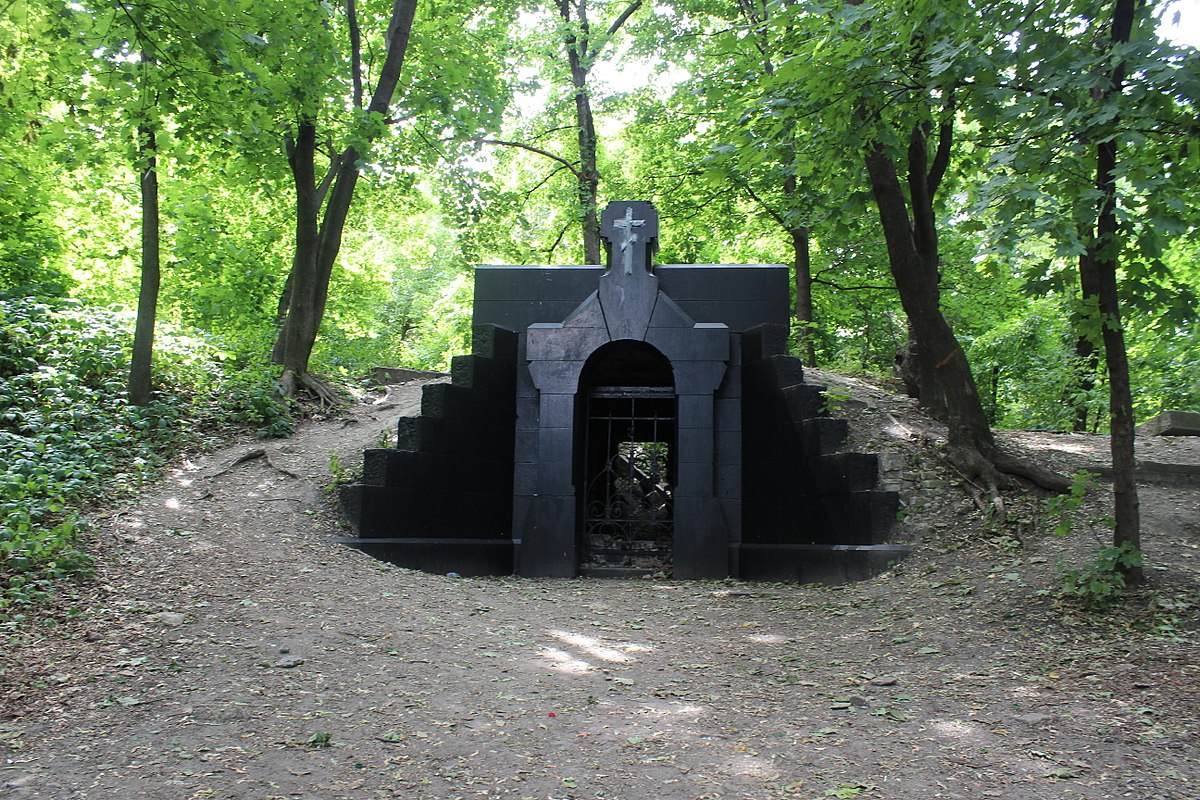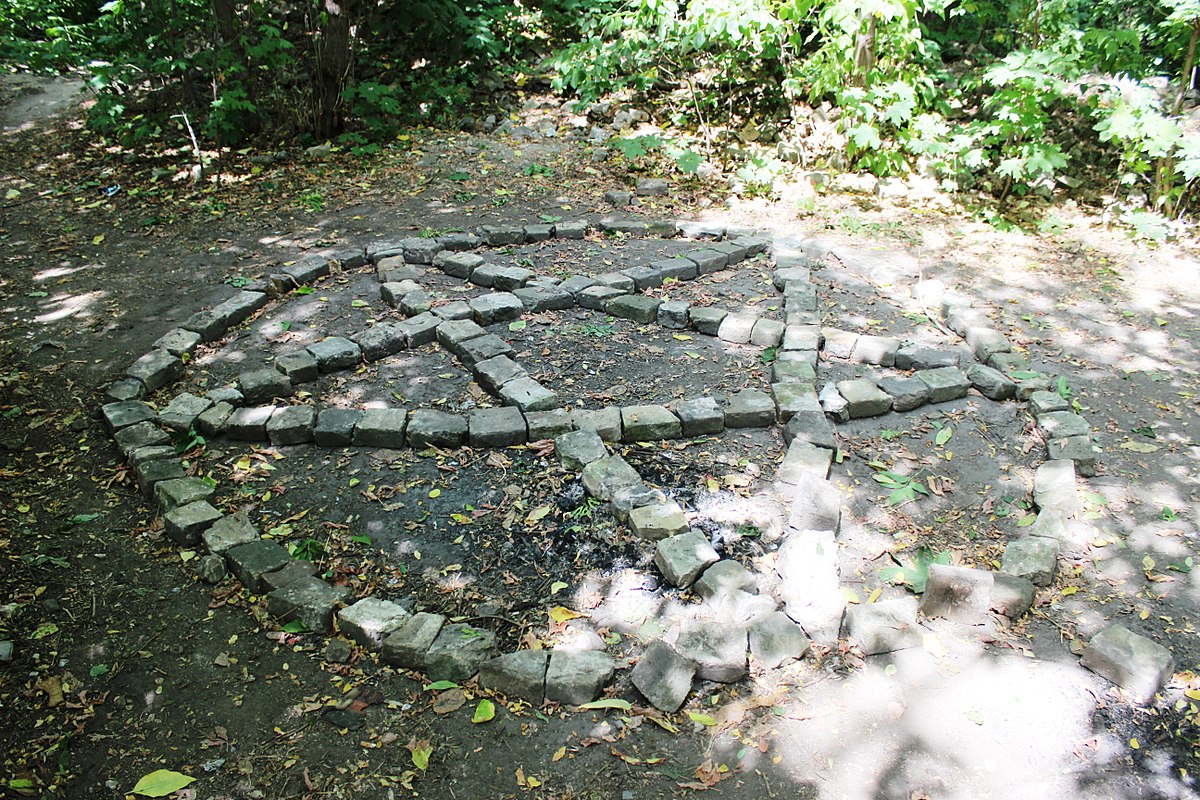Castle Mountain (other names: Khorivitsa, Kiselevka, Florovskaya or Frolovskaya Mountain) is a historical hill, which is an outlier (an isolated rock mass that remains after the destruction of a more unstable rock by any exogenous factors – weathering, erosion, exposure to water, etc. .d.), separated from the neighboring plateau of Starokievskaya Mountain by erosion that occurred in the Quaternary period. The height above the Dnieper level is 80 meters. It is located between Starokievskaya Mountain, Shchekavitsa and the Gonchary-Kozhemyaki tract on one side and Podol on the other. Khorivitsa is part of the historical and architectural complex “Ancient Kyiv”, which is protected by the Law of Ukraine, and is part of a small natural park in the Podil region as one of two hills located next to Andreevskij Spusk. On the mountain there is also a memorial stele in memory of the ancestors and a cross in memory of the Sich Riflemen.
History of Castle Hill
According to archaeological data, the first settlement on the territory of Khorivitsa arose in the Bronze Age. According to a number of researchers, the residence of the Polian prince Kiy could have been located on the territory of Khorivitsa long before the construction of the fortification on Starokievskaya Mountain, which laid the foundation for the city of Kyiv. In the second half of the 9th century, a settlement of the Luka-Raykovets culture appeared on Castle Hill (Kiselevka). It was encircled by other extremely small Luka-Raikovets settlements: the village of Kudryavets from the west, the settlement on Detinka Hill and the settlement on Starokievskaya Mountain from the south, the settlement on Mount Vozdyhalnitsa from the east. In the 10th century, a country princely palace was located on Castle Hill.
In the 70-80s of the 14th century, Kiev Podol became the center of the city, and a wooden castle of the Lithuanian governor Vladimir Olgerdovich was built on Khorivitsa, which was destroyed in 1482 by the invasion of the Crimean Khan Mengli Gerey, but already in 1532-1545 it was restored and rebuilt again. In 1651, the rebel Zaporozhye Cossacks burned the restored castle, which belonged to Adam Kisel. After the destruction of the buildings, the mountain was used for a long time by local residents for vegetable gardens and melon fields. In 1816, a cemetery was formed in Khorivitsa for the population of Podol, Goncharov and Kozhemyak, as well as the clergy of the Florovskiy Convent, which owned the mountain since 1854, and is located at the foot of the mountain from the Podol side. In 1857, a cemetery church in the name of the Holy Trinity was erected on the mountain, and the cemetery was surrounded by a brick fence, the remains of which have survived to this day. Officially, the cemetery existed until 1921, but functioned until the 50s of the 20th century. In 1940, a radio station was built in Horivice, which was used to jam the signals of foreign broadcasting stations. In the early 1990s, the tower was dismantled.
